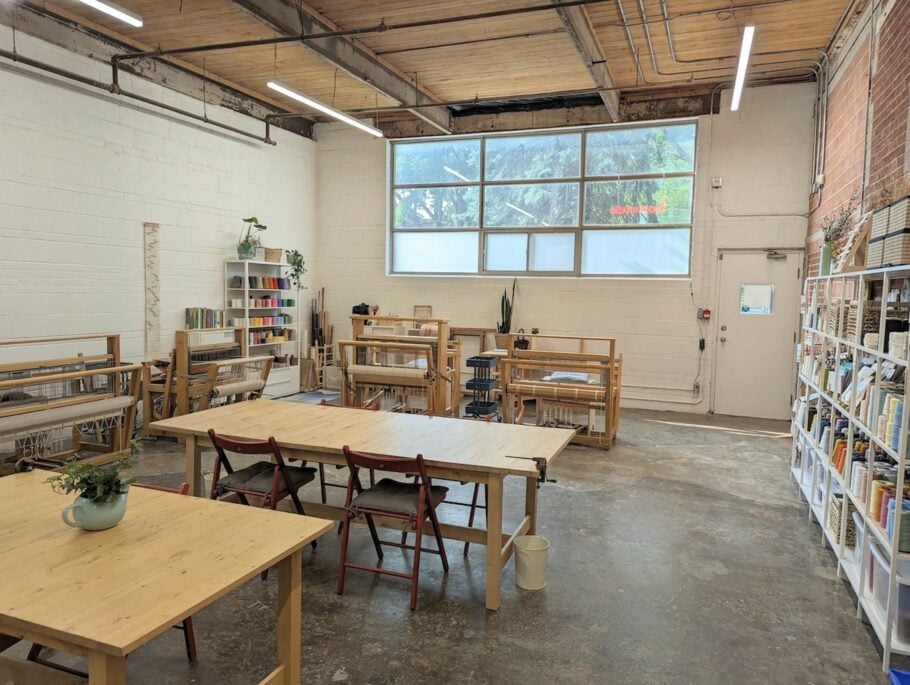Q&A: Loom Studio Talks Building Community and Niche Artistry

Loom Studio’s Johana Cordero speaks on her journey to creating and celebrating the textiles and weaving studio
Textile arts are intricate works that often draw inspiration from the world around them, calling on familiar motifs and colour palettes. Loom Studio, a Toronto-based weaving and textiles space, does just that. Reflecting on the vibrant and diverse creative landscape of Toronto, the studio highlights the intersection of art, design and community building.
Designlines sat down with the studio’s founder and educator, Johana Cordero, to discuss her evolution with weaving and textiles, her proudest moments and how she crafted her studio space.
Designlines: How did you get your start in weaving and textile art?
Johana: I started out by attending the textile program at Sheridan College but it wasn’t until I got to NASCAD in Nova Scotia that I had a chance to try weaving through one of my elective courses. I haven’t looked back since; it was a aha moment for me! With textiles, you can learn so many different things and it can be challenging to not only find your niche, but to have access to it.
Designlines: How did Loom Studio come to be and what was your vision?
Johana: I founded Loom Studio in 2017 with a vision of creating a space that could be both educational and communal. I wanted to teach classes as well as provide local artists with a space to practice their craft. You learn very quickly that the practices you want to have are very difficult to do on your own. In school, you have access to these beautiful studios that have all the equipment and then when you graduate, you don’t have access to any of that and it makes it very hard for artists to really start to develop their practice.
Designlines: You mention creating both an educational space and a hub for artists as key focuses in your practice. What programs do you have in place to foster these goals?
Johana: This year, Loom Studio is working with OCAD to offer work placements for textile students. And even expanding beyond this too, I’m hoping to be able to offer summer residencies for textile artists to come in and develop their practice. I’m also in the works of developing a kid’s summer camp program.
Designlines: When was important for you when establishing the studio’s physical space?
Johana: Loom Studio’s current location is my fifth studio space. I started out in a studio that was a collective of artists and it burned down, resulting in the loss of all my looms and I had to start from scratch. My current studio is by far the largest space I’ve been in, which will allow me to host even larger workshops and allow for even more artists to use the space.
I wanted to keep the overall design very clean and minimal, and the large windows flood the studio with natural light. This is a space for creatives, whether beginners or experts, so it was important for me to create a space where people could feel comfortable and inspired.
Designlines: What is one of your proudest moments for both Loom Studio and you as an artist?
Johana: For Loom Studio, it’s been quite the rollercoaster. The world experienced COVID, I had a baby and yet I always had a drive to come back to create this space. I think that determination is one of the reasons Loom Studio has continued to evolve and I remind myself to feel proud of that. It is a labour of love and passion that keeps it going.
For myself as an artist, in 2019, I was commissioned to create a couple of large-scale wall hanging that now hang in the Summerhill Market’s Annex location. To walk into a space and see your work displayed is such a powerful and motivating feeling. It acts as a push to remind me to keep doing what I love.


























